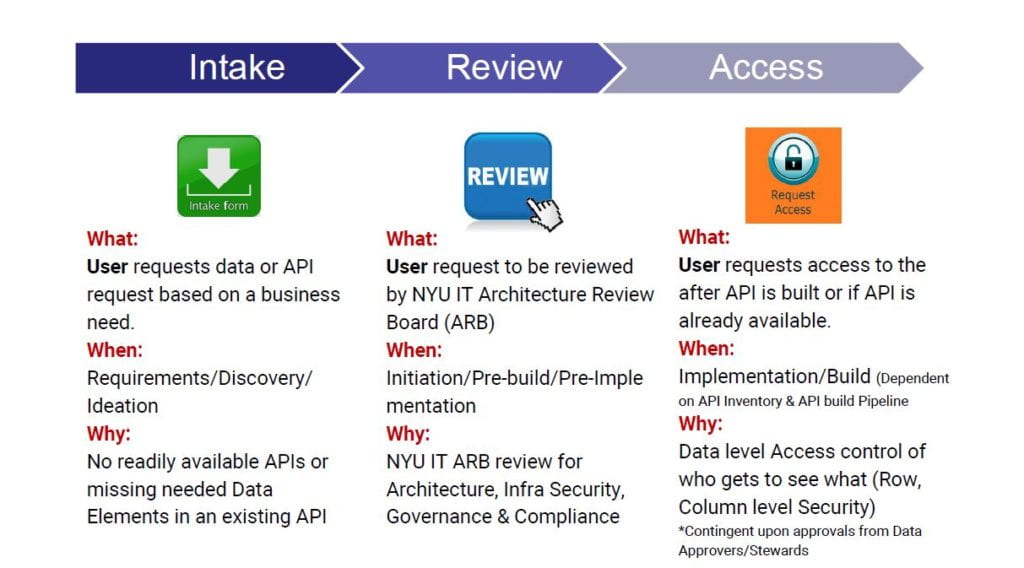Where can I find a list of APIs?
List of available APIs are available on WordPress A-Z list of APIs. A link to API Portal or third party websites is provided from the A-Z list where the description, technical details, and mock examples of these APIs can be found.
How to access API Portal?
The link is portal.api.it.nyu.edu. Based on your access levels you can either see Public & Private APIs or just Public APIs.
What is the current Mule run time version being used?
4.4.0. Please note that Mule 3 is no longer supported.
Where do I download Anypoint Studio from?
The link to the current version of Anypoint studio is available under the resources section of this word press site, here is the direct link Developer-Workstation-Setup
How do I set up a development environment using Anypoint Studio?
Please refer to the above link for basic setup.
Where can we find API endpoints?
API endpoints are available in the Exchange section of the API portal for each API. It also includes API details like input and output along with examples.
How to request access to APIs?
Overview of accessing APIs
Who has access to submit the API Access form?
Access to the form is enabled through SSO in service now.
Are there any timelines around API services?
Below is a list of some of the estimates for API Intake and access provisioning. Note that this is just an estimate and could change depending on other priorities of the API team or the ARB.
| Type of Request | Expected Time of Availability | Additional comments |
| ARB Approved – API Access Request | 2 Weeks | Assuming any concerns approvers have are clarified. |
| ARB Not Approved – API Access Request | 3 to 4 weeks | It depends on ARB Approval and if all data owners’ questions get answered |
| API Intake Form | No Specific time | Based on certain factors like the priority of the project, the number of requests received for the same API, etc |
| Overall API provisioning ( End to End) | 6 to 7 weeks | Assuming all the above activities are initiated in parallel. |
Are there any best practices around building APIs?
Please refer to API Best Process Link for best practices around APIs.
What are good testing tools for testing APIs?
Standalone APIs can be tested using Postman. There are different options in Postman, using which APIs can be tested with different data. Please refer to API Testing Link for more details on testing APIs
Where do we store API source code?
All API source code will be stored in Gitlab which is integrated with Jenkins to do a continuous Integration and deployment.
What is the process for production deployment?
Please refer to the link for the API production deployment process. Production Migration Link
What are Foundational APIs?
Foundational APIs are system-level APIs, the usage of which is designed for multiple applications to consume the data as is or use with other Foundational APIs. One to Many integrations.
What are Integration API’s?
Integration APIs are APIs which are built as per the business needs of one particular application. These are point-to-point integrations and in most cases cannot be used for other integrations.
Should we request an API to integrate between two products?
API first is the strategy followed but APIs should be created between two products if they are expected to be reusable and if the 2 products are enterprise-level products.
When to request an API?
Refer to the data governance process.

Who can test in a sandbox environment?
- Mock APIs available through Mulesoft Portal can be tested by all.
- Developers building the APIs can test their APIs after deploying to Sandbox.
- Once API access is approved, use postman to test in Production.
